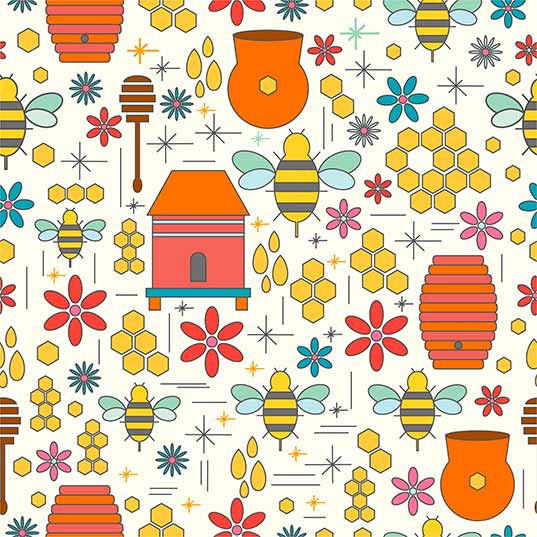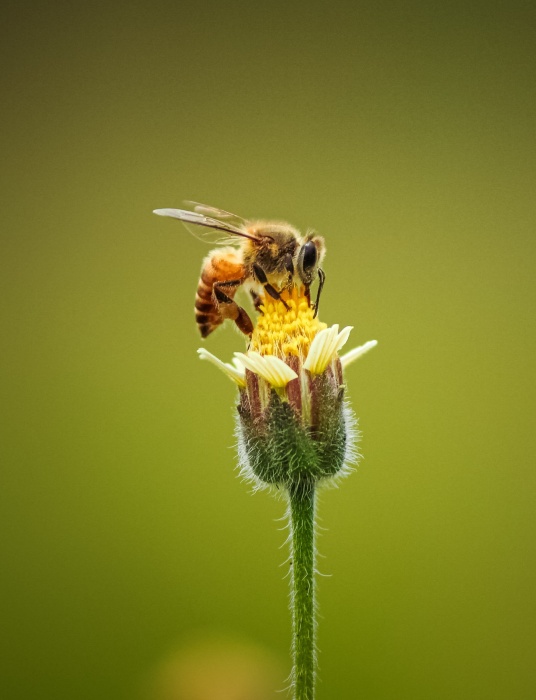Our urban environment, although designed by and for people, is home to an incredible variety of life. Many creatures, such as bacteria and microbes, are too small to be seen, but play a crucial role in our world by configuring a city’s microbiome.
Every decision we take about how to build and organize our cities also has an impact on its microscopic inhabitants. As residents of cities, we are in constant contact with them. And it is becoming increasingly obvious that our health and wellbeing is intrinsically linked to these interactions.
How can we better understand the microscopic populations of our cities? The answer might surprise you: bees! And the latest research suggests that we could use these pollinators to create microbial maps of our cities.
What will I learn from this article?
A city’s bees permit us to know the health of the place we live in
 Bees, those busy little creatures that buzz from flower to flower performing a fundamental role in the health and vitality of our environment. As important pollinators, they are the invisible heartbeat driving biodiversity, facilitating the reproduction of most plants making up the basis of our ecosystem.
Bees, those busy little creatures that buzz from flower to flower performing a fundamental role in the health and vitality of our environment. As important pollinators, they are the invisible heartbeat driving biodiversity, facilitating the reproduction of most plants making up the basis of our ecosystem.
And yet their existence is threatened by multiple factors, from climate change to pesticide use. As we saw in this article, their decline could be having catastrophic repercussions, not only for the natural beauty around us, but also for production of the food we depend on.
Protecting these tireless workers is not only a question of environmental conservation, however. Recently it was discovered that bees are a highly useful tool for knowing the state of health of the cities in which we live.
This was revealed by a study published in the journal Environmental Microbiome, in which scientists demonstrated, from analysis of deposits on the bottom of the hives of honeybees, how they can get to know the microbial landscape of an urban environment.
“From the analysis of deposits on the bottom of the hives of honeybees, we can get to know the microbial landscape of an urban environment”
Microbiome refers to the invisible communities of microbes, fungi, viruses and bacteria that live within and around us, performing key roles in the functioning of the health of the urban environments of human populations, as well as plants and animals.
Our cities are full of microbes and bacteria. Knowing which ones, and the numbers in which they are present, and how they affect us, is essential in designing healthier and more sustainable cities for the future.
Beyond pollen: bees and their role in the city’s microbial map
 Urban bees make long journeys every day they venture out in search of food. They can travel around a radius of two miles from their hives, and when they do they collect more than simply pollen and nectar.
Urban bees make long journeys every day they venture out in search of food. They can travel around a radius of two miles from their hives, and when they do they collect more than simply pollen and nectar.
As they fly around the neighborhood, microorganisms and other tiny particles stick to bees’ bodies. These samples, which they collect and later deposit in the bottom of their hives, thus contain lots of information on the state of a large area of the city.
This discovery led a team of researchers to work with local beekeepers to collect and analyze microbes in honey samples, parts of bees and deposits in hives, in five cities worldwide - New York, Venice, Tokyo, Melbourne and Sydney – using the information to get to know the unique, diverse microbial footprint of each place.
They discovered that each city had its own microbial profile. A profile which, curiously, is influenced by the cultural and geographical context in which it thrives. In Venice, for example, where many buildings were built on wooden beams under the water of the canals, the sample data consisted of fungi related to rotting wood. And, in Tokyo, researchers found genetic remains of fermenting yeast used in soy sauce and miso paste production.
Moreover, the study demonstrated how the materials collected from the hives could help health professionals in monitoring pathogens. Using multiple samples collected in Tokyo, they were not only able to identify the Rickettsia felis pathogen responsible for the bacterial disease known as “cat scratch fever”, but they could also conduct additional analysis to determine the genetic factors that caused their hosts to be infected.
The study underlines the importance of protecting bee populations, not only for their role in natural ecosystems, but also for their potential as environmental monitoring tools. Bees offer us a unique opportunity to understand and improve the health of our cities, and as such it is even more our duty to protect bees and value their contribution.
Sources: